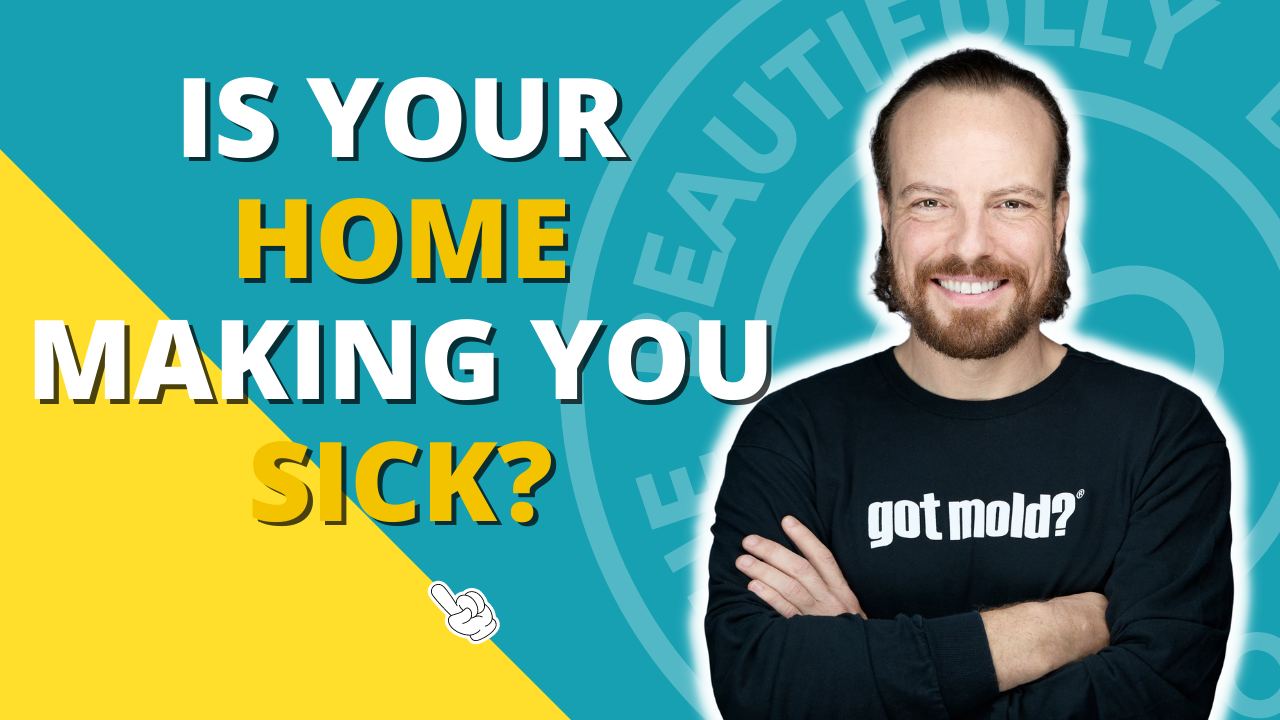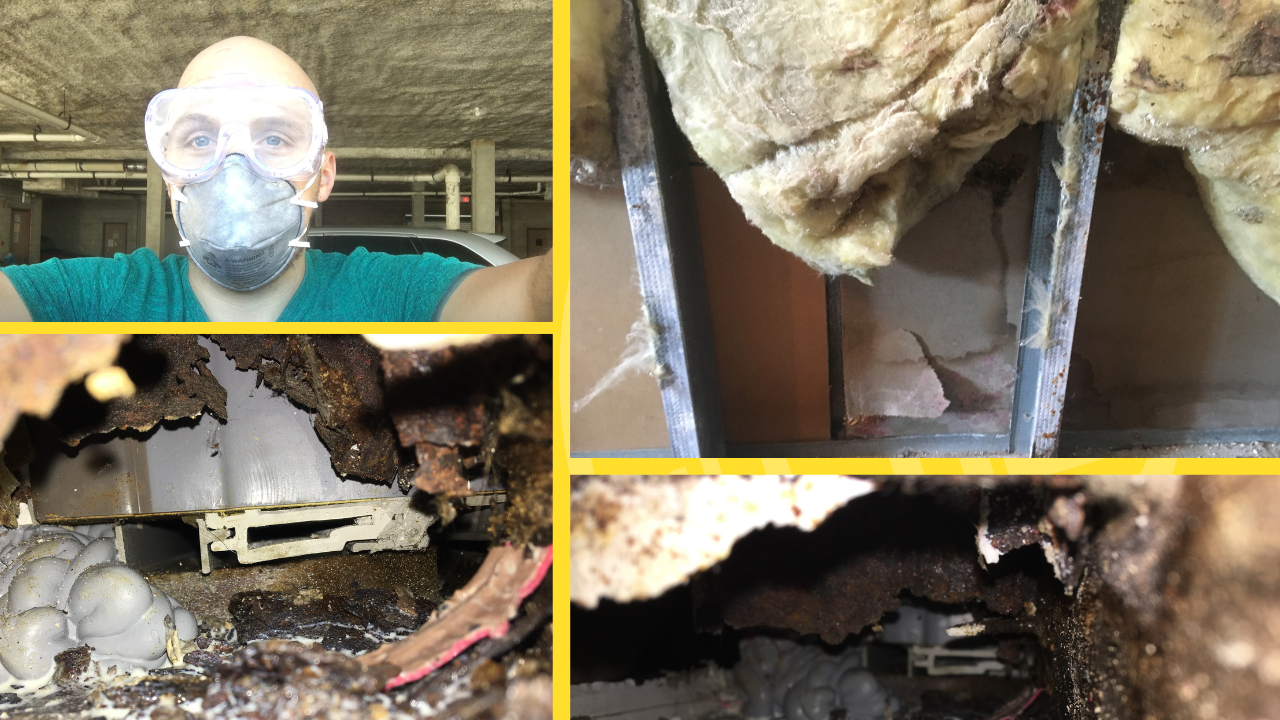30 Key Points about Mold Toxicity, Testing, and Remediation with Jason Earle #142
Mar 21, 2023
In this podcast episode #142 "Mold Toxicity, the New Standard of Testing, and Remediation with Jason Earle", Jason Earle shares his personal experience about the various aspects of mold toxicity, such as how buildings can make people sick or healthy, the symptoms associated with mold exposure, and the underlying causes of respiratory illnesses.
Jason and Freddie also discuss the importance of education and awareness around indoor air quality, the need for safer building materials, and the role of moisture control in preventing mold growth. As we listen to Jason's journey and the solutions he offers, it becomes clear that his mission is not just about removing mold but promoting good health for all by living in harmony with our environment.
Freddie's Personal Experience
MOLD forever altered the course of my life, robbing me of the progress I had made through years of dedicated work towards clean food, breath work, exercise, and supplementation, as well as a significant financial investment in wellness. Even after overcoming metastatic cancer and Lyme disease, purchasing my first dream home felt like an insurmountable feat. However, my joy was short-lived when I discovered that my dream apartment in New Jersey was infested with toxic mold spores and unfriendly fungi, negatively impacting my body's mitochondrial function.
The consequences of this discovery were severe: extreme fatigue, loss of cognitive function, dynamic full-body neuralgia, and eczema. If only I had better testing and a deeper understanding of the situation, I could have alleviated much of my suffering. The financial burden of testing was nothing compared to the expenses of full home remediation and legal fees, which reached $60,000 in 2017 and 2018.

If I had known that an at-home test could provide a more comprehensive view of the mold colonies I was dealing with, I could have saved myself a great deal of time, money, heartache, and years spent in better health. This experience has taught me to appreciate the work of companies like GOT MOLD and inspired me to pursue opportunities to learn from innovators like Jason Earle. He is a living example of someone who has turned his pain into purpose, and I am grateful for the chance to share my story through podcasting.
Summary of the #142 Episode with Jason Earle
Here are 30 key points to consider from this episode:
- Jason Earle was diagnosed with a terminal illness that was cured after he moved out of his moldy home.
- Jason provides an at-home test kit for mold, using a lab from one of the best microbiology centers in the country.
- The test kit looks at outdoor air quality, indoor air quality, and the difference between different rooms in the home.
- The testing is separated from the people who are offering remediation solutions, which is an important point discussed in the show.
- Jason Earle became interested in the impact of buildings on human health after reading about mold problems at a hotel in Hawaii.
- Buildings can make people sick or healthy and are like an exoskeleton that needs to be taken care of.
- Mold exposure leads to a decrease in functionality, energy, and various symptoms. [1, 2, 3, 4, 5]
- Mold grows wherever buildings fail or have defects in their original construction.
- Typical places for mold growth include around windows, where the roof meets siding, and split-level homes.
- Finished basements and crawl spaces are also notorious for mold growth.
- Respiratory illnesses in America have increased by 165% since 1965.
- Death related to respiratory illness has also increased by 30% during the same period.
- Smoking has decreased during this time, yet respiratory illnesses have continued to rise.
- New, fast, and cheap building materials introduced in the 1940s and 1950s have made homes tighter and more prone to mold growth.
- Tighter homes trap water, leading to mold growth, especially since materials like sheetrock and drywall are mold-friendly.
- Jason and Freddie believe that we need to focus on the underlying causes of disease rather than just treating symptoms.
- The musty odor from mold can cause neurotoxicity, and mitochondrial damage, and chronic exposure can lead to disease and building decay. [2, 6, 7]
- There is a need for more awareness and education about indoor air quality and the impact it can have on health.
- It's important to work with professionals who understand the science and can offer solutions based on individual circumstances.
- Remediation should be done in a way that is safe for the occupants of the building and doesn't further spread mold spores.
- DNA-based technology can find all known microbes in a dust sample and show the whole gradient scale of all microbes in the sample. [8, 9]
- The speaker offers an at-home test kit that can help identify mold and other microbes in the air and can guide remediation efforts.
- Education and awareness around indoor air quality should be a priority in schools and other public places.
- Mold problems in schools can affect children's ability to learn. [10, 11]
- Building materials should be designed with human health in mind and free of harmful chemicals.
- Moisture control is key in preventing mold growth and maintaining good indoor air quality. [12]
- Killing mold with bleach leaves behind dead mold, which is still allergenic and creates an environment with more aggressive molds.
- Natural ventilation and air circulation can also help maintain good indoor air quality.
- Exposure to extreme temperatures can have health benefits and help train the immune system to deal with diseases.
- Jason's mission is to remove all chemicals that are carcinogenic or adversely affect human health from building materials used for construction in buildings. He believes that it's important to work towards a future where we can live in harmony with our environment and promote good health for all.
Bonus
- Got Mold? (10% off)
- AmpCoil ($99 off)
- LightPath LED (5% off)
- Simply 03 Ozone System (Lifetime manufacturer’s warranty)
- Therasage Sauna — the best-infrared sauna that I know! (10% off)
⭐ Here are links to this amazing Episode #142 "Mold Toxicity, the New Standard of Testing, and Remediation with Jason Earle" (Apple Podcasts | Google Podcasts | Stitcher | Spotify)
- #121 Toxic Mold, Genetics, and Testing (Apple Podcasts | Google Podcasts | Stitcher | Spotify)
- #63 Toxic with Dr. Neil Nathan (Apple Podcasts | Google Podcasts | Stitcher | Spotify)
- #105 Binding Toxins, Bioactive Carbons and CellCore with Dr. Jay Davidson (Apple Podcast | Google Podcast | Stitcher | Spotify)
- #129 Environmental Toxicity, Diagnostic Testing, and the Rain Barrel Effect with Dr. Stephen Cabral (Apple Podcasts | Google Podcasts | Stitcher | Spotify)
References
1 Khalili, B., Montanaro, M. T., & Bardana, E. J., Jr (2005). Inhalational mold toxicity: fact or fiction? A clinical review of 50 cases. Annals of allergy, asthma & immunology: official publication of the American College of Allergy, Asthma, & Immunology, 95(3), 239–246. https://doi.org/10.1016/s1081-1206(10)61220-3
2 Kraft, S., Buchenauer, L., & Polte, T. (2021). Mold, Mycotoxins and a Dysregulated Immune System: A Combination of Concern?. International journal of molecular sciences, 22(22), 12269. https://doi.org/10.3390/ijms222212269
3 Empting L. D. (2009). Neurologic and neuropsychiatric syndrome features of mold and mycotoxin exposure. Toxicology and industrial health, 25(9-10), 577–581. https://doi.org/10.1177/0748233709348393
4 Hyvönen, S., Lohi, J., & Tuuminen, T. (2020). Moist and Mold Exposure is Associated With High Prevalence of Neurological Symptoms and MCS in a Finnish Hospital Workers Cohort. Safety and health at work, 11(2), 173–177. https://doi.org/10.1016/j.shaw.2020.01.003
5 Rosenblum Lichtenstein, J. H., Hsu, Y. H., Gavin, I. M., Donaghey, T. C., Molina, R. M., Thompson, K. J., Chi, C. L., Gillis, B. S., & Brain, J. D. (2015). Environmental mold and mycotoxin exposures elicit specific cytokine and chemokine responses. PloS one, 10(5), e0126926. https://doi.org/10.1371/journal.pone.0126926
6 Lieberman, A., & Curtis, L. (2020). Mold Exposure and Mitochondrial Antibodies. Alternative therapies in health and medicine, 26(6), 44–47.
7 Hope J. (2013). A review of the mechanism of injury and treatment approaches for illness resulting from exposure to water-damaged buildings, mold, and mycotoxins. TheScientificWorldJournal, 2013, 767482. https://doi.org/10.1155/2013/767482
8 Rachel I. Adams, Seema Bhangar, Karen C. Dannemiller, Jonathan A. Eisen, Noah Fierer, Jack A. Gilbert, Jessica L. Green, Linsey C. Marr, Shelly L. Miller, Jeffrey A. Siegel, Brent Stephens, Michael S. Waring, Kyle Bibby. (2016). Ten questions concerning the microbiomes of buildings, Building and Environment, Volume 109, Pages 224-234, ISSN 0360-1323, https://doi.org/10.1016/j.buildenv.2016.09.001
9 Sterflinger, K., Piñar, G. (2021). Molecular-Based Techniques for the Study of Microbial Communities in Artworks. In: Joseph, E. (eds) Microorganisms in the Deterioration and Preservation of Cultural Heritage. Springer, Cham. https://doi.org/10.1007/978-3-030-69411-1_3
10 Jedrychowski, W., Maugeri, U., Perera, F., Stigter, L., Jankowski, J., Butscher, M., Mroz, E., Flak, E., Skarupa, A., & Sowa, A. (2011). Cognitive function of 6-year old children exposed to mold-contaminated homes in early postnatal period. Prospective birth cohort study in Poland. Physiology & behavior, 104(5), 989–995. https://doi.org/10.1016/j.physbeh.2011.06.019
11 Santilli J. (2002). Health effects of mold exposure in public schools. Current allergy and asthma reports, 2(6), 460–467. https://doi.org/10.1007/s11882-002-0085-z
12 Wu, H., & Wong, J. W. C. (2022). Temperature versus Relative Humidity: Which Is More Important for Indoor Mold Prevention?. Journal of fungi (Basel, Switzerland), 8(7), 696. https://doi.org/10.3390/jof8070696



